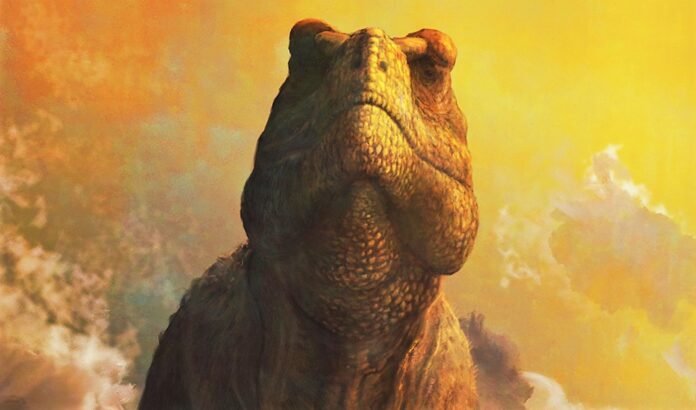Re-examining Popular Depictions of Theropod Dinosaurs
A recent study has shaken up the popular perception of theropod dinosaurs, a group of carnivorous creatures that includes the infamous Tyrannosaurus rex. These dinosaurs have long been depicted with exposed teeth and no lips, similar to the crocodiles they are often compared to. However, the study’s findings suggest that theropods likely had lips covering their teeth, more akin to modern-day lizards, contradicting the popular depiction.
Background
The debate on whether theropods had lips or not has been a topic of discussion among paleontologists and paleoartists for years. Early reconstructions of theropods from the 1920s and 30s depicted these creatures with flesh covering their teeth, but popular media, such as the movie Jurassic Park, depicted them with exposed teeth and no lips, perpetuating the myth.
The Study
In this study, researchers sought to analyze the relationship between skull length and tooth size for living reptiles, such as Komodo dragons, as well as various theropod dinosaurs, including Velociraptor and T. rex. They discovered that the teeth of these dinosaurs were not too large or too long for their skulls, indicating that they did not have to protrude from their mouths.
Moreover, when the researchers compared the enamel on a slice of tooth from a Daspletosaurus theropod to that of a modern crocodile, they found that the dinosaur tooth had a significantly thicker layer of enamel on its outside. This suggests that theropods likely had lips that protected their teeth from the elements, similar to modern-day lizards.
To further support their findings, the researchers also compared the skull anatomy of dinosaurs and crocodiles to that of lizards with lips, such as iguanas and monitor lizards. They found that dinosaur skulls more closely resemble those of lipped lizards and iguanas, providing strong evidence that theropod dinosaurs also had lips.
Expert Opinions
While some experts find the study’s findings to be tantalizing, others remain skeptical. Paleoneurologist Ashley Morhardt notes that the study is based on a small sample size, with only one dinosaur tooth and one crocodile tooth, potentially leading to bias. Paleontologist Thomas Carr dismisses the study’s findings entirely, claiming that theropods were lipless and had highly textured face bones that felt like wrinkled leather, similar to crocodiles. Carr argues that better physical evidence is needed to settle the debate once and for all.
Conclusion
In conclusion, this study challenges the popular perception of theropod dinosaurs and suggests that they likely had lips covering their teeth, more akin to lizards than crocodiles. These findings could have significant implications for paleoartists seeking to depict these creatures more accurately and for scientists studying their feeding behavior. However, more research is necessary to settle this debate definitively.
Google News | Telegram
















